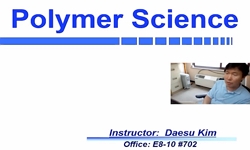Acrylic rubber, also known as alkyl acrylate copolymer (ACM), offers exceptional heat resistance, second only to silicone rubber, making it ideal for extreme-environment applications. The performance grades of ACM vary based on cross-linking methods, ...
http://chineseinput.net/에서 pinyin(병음)방식으로 중국어를 변환할 수 있습니다.
변환된 중국어를 복사하여 사용하시면 됩니다.
- 中文 을 입력하시려면 zhongwen을 입력하시고 space를누르시면됩니다.
- 北京 을 입력하시려면 beijing을 입력하시고 space를 누르시면 됩니다.

Correlation between Crosslinking Molecular Structure and Physical Performance of Acrylic Rubber = Correlation between Crosslinking Molecular Structure and Physical Performance of Acrylic Rubber
한글로보기https://www.riss.kr/link?id=A109480171
-
저자
( Seong-guk Bae ) (한국소재융합연구원) ; ( Jung-soo Kim ) ; ( Min-jun Gim )
- 발행기관
- 학술지명
- 권호사항
-
발행연도
2024
-
작성언어
-
- 주제어
-
KDC
500
-
등재정보
KCI등재,ESCI
-
자료형태
학술저널
- 발행기관 URL
-
수록면
149-155(7쪽)
- DOI식별코드
- 제공처
-
0
상세조회 -
0
다운로드
부가정보
다국어 초록 (Multilingual Abstract)
Acrylic rubber, also known as alkyl acrylate copolymer (ACM), offers exceptional heat resistance, second only to silicone rubber, making it ideal for extreme-environment applications. The performance grades of ACM vary based on cross-linking methods, which are influenced by the strength of the cross-link bonds. Among these methods, the carboxylic acid-amine cross-linking system stands out for its superior heat resistance, making it ideal for high-temperature sealing components in automotive engines. In this study, we investigated the effects of bridge-forming molecular structures, specifically aliphatic, aromatic, and alicyclic diamines, on the cross-link density, baseline mechanical properties, and durability of ACM rubber within this cross-linking system. Our findings indicate that the cross-linking molecular structure significantly influences the deformation and recovery characteristics of highly entangled chains under external stresses. This research provides valuable insights into material development for industrial applications to meet the demands for enhanced durability and performance under extreme conditions.
동일학술지(권/호) 다른 논문
-
- 한국고무학회
- ( Eunji Chae )
- 2024
- KCI등재,ESCI
-
Prediction the Residual Life-time of Field-Aged FKM O-rings
- 한국고무학회
- ( Jin Hyok Lee )
- 2024
- KCI등재,ESCI
-
- 한국고무학회
- ( Sunyoung Han )
- 2024
- KCI등재,ESCI
-
Study on the Properties of Asphalt Sheets with Liquid Epoxidized Natural Rubber
- 한국고무학회
- ( Gwan Hee Lee )
- 2024
- KCI등재,ESCI




 ScienceON
ScienceON KISS
KISS





